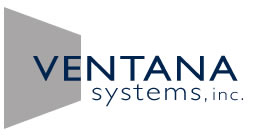Predicting Assembly Learning Rates
After years of difficulty developing its product, a defense contractor finally had the high quality product it had promised the U.S. Government years earlier. Unfortunately, even after the production of several units, its manufacturing cost was far too high. The unit cost was finally starting to come down smartly, but the contractor didn’t know for how long the favorable trend would continue. Its commercial parent had suffered several disappointments on earlier occasions by assuming continuing improvement. Yet, the Government would not commit to further purchases unless the contractor offered a fixed price contract showing large price reductions. To quote a responsible price, the company needed to know how costs would change over the next few years.
The pricing decision was so critical to the company’s future that it initially asked three different organizations to make cost forecasts (two internal cost estimating groups and a consultant). Executives hired Ventana as a fourth estimator almost as an afterthought. Our assignment was to analyze the current situation and to predict changes in assembly labor hours. To do this, we built a manufacturing model that simulated the company’s operations and policies. Then, we calibrated it using historical production data drawn from the early years of the defense program. We discovered that the company’s traditional learning curve logic explained little (if any) of the company’s cost history. The key sources of assembly ‘learning’ involved: (a) hiring and layoff policies, (b) the amount of work impacted by engineering errors or lateness, (c) the conformance of work to the assembly plan, and (d) changes in the size of the assembly task resulting from subcontracting, product redesign and process improvements.
With the causes of historical labor costs roughly understood, Ventana used the simulation model to project future costs based on existing plans. Because the model parameters we had estimated from the historical data were fundamental drivers of cost, quality and schedule, our forecast did not merely extrapolate from the historical data. We predicted a steady cost decline lasting about two years, with a significant 23% reduction coming in the first year. After that, however, we predicted that improvement would falter, unless the company funded more engineering work to force cost down further. Under one planning scenario, we predicted a cost increase starting three years in the future. Overall, the contractor regarded the forecast as good news, and it signed a long-term contract with the lower price that the Government demanded.
A year later Ventana contacted the company to find out how accurate the first year of our forecast was. The data showed that the labor hour decline was 24% instead of the 23% we had predicted. This discrepancy was well within the accuracy of the data. We also learned that two of the other three estimators had faired less well, despite spending more time and effort. One had forecasted a change in labor cost of 34% during the first year, while another had projected significantly less improvement than we did. The performance of the third estimator was not revealed to us.
